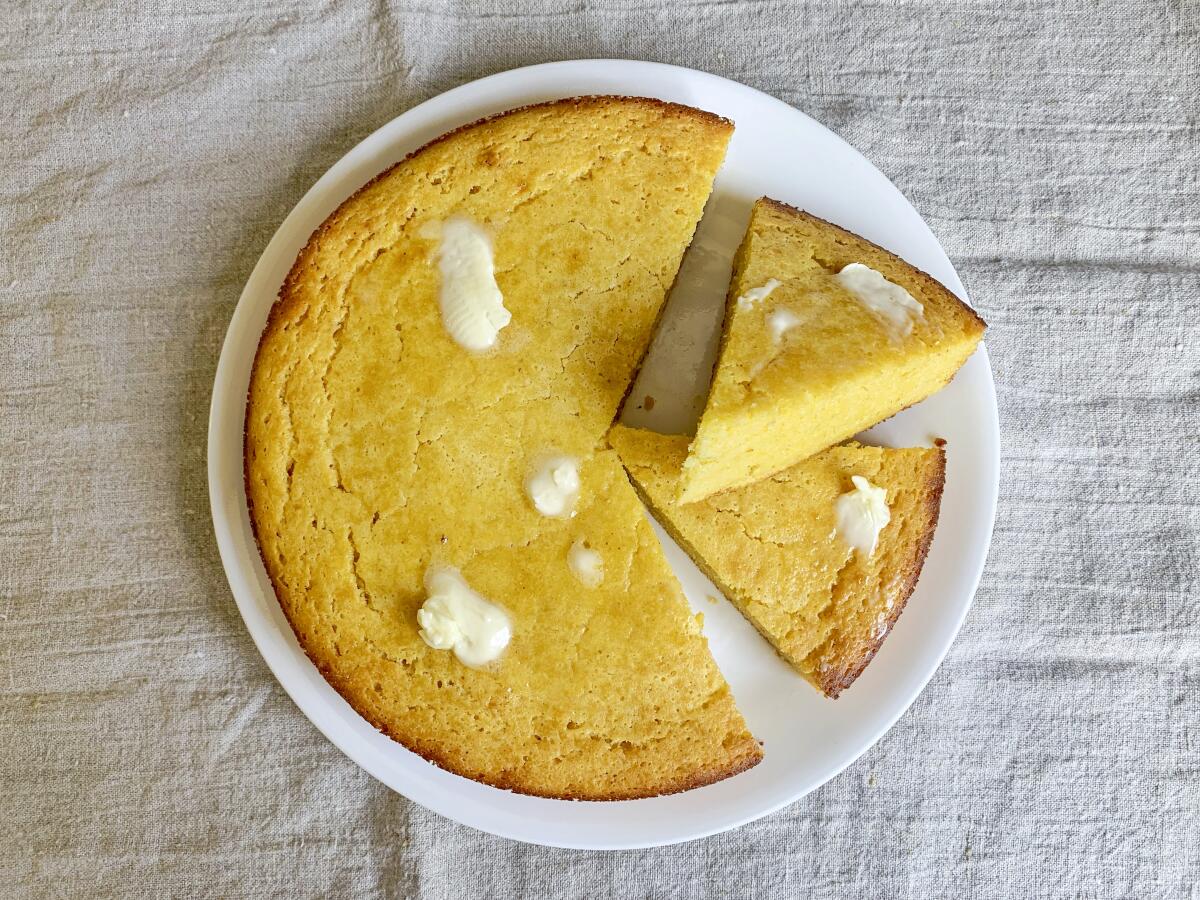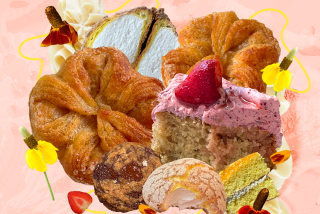Cornbread with an open mind

One afternoon, as I was preparing a Southern meal for friends coming over for dinner, I realized I had forgotten to make the cornbread. But since I keep all the ingredients on hand at all times, I knew I wouldnât have a problem quickly baking a round. However, as I searched through my pantry, I saw that I had no cornmeal left, but in its place on the shelf, a lone bag of masa harina. âCorn for corn,â I thought and decided to use it to make my cornbread.
The recipe â my grandmotherâs, which I have made countless times in my life â made with masa harina produced a cornbread that was distinctly different from what I was used to but was equally delicious. It had a much more pronounced corn flavor and was softer. It was one of those small experiments that turned out to be a much bigger deal in hindsight â the happenstance of its creation opened my mind to what cornbread could be.
Masa harina in cornbread isnât new, but itâs still not as common as I think it should be. But to understand the ingredientâs brilliance in this application, we first must define what it is and isnât. Typically, the cornmeal you and I buy in grocery stores is made with dried corn that is ground to varying degrees of coarseness. It is usually made with dent corn, a variety of âfield cornâ that is covered in a hard starch exterior covering a soft starch center. (Polenta, a coarse ground cornmeal, is made with flint corn, which is mostly hard starch throughout.)
Masa harina, however, is made by first soaking the corn kernels in an alkaline solution like slaked lime or lye, which dissolves the hard outer shell and leaves behind the soft starch center. This center is then ground fine and dried to produce the masa harina. The soaking step makes the corn more easily digestible but it also has the added benefit of making the corn taste more, well, corny.
Masa harinaâs softer and finer texture is precisely why itâs suited for making doughs for tortillas and tamales. But it also serves to make an even more tender Southern-style cornbread when used in place of coarse cornmeal. That I was using locally produced heirloom masa harina â from Masienda, located in West Los Angeles â surely didnât hurt; it produced such a fantastic, mind-changing flavor.
At the same time as this revelation, my partner and I were battling â as is our perennial predilection â over whether to add sugar to cornbread. I grew up in a household that didnât use it, and our cornbread was flatter and had a crunchy bottom. My partner, however, grew up with Jiffy cornbread mix and, thus, prefers a sweeter, cakier texture.
If youâre from the South, you may know that the sweet-versus-unsweet cornbread debate is drawn almost exclusively along racial lines. In her award-winning 2017 Charlotte Observer article âWhy does sugar in cornbread divide races in the South?,â author Kathleen Purvis writes:
âUntil early in the 20th century, Southern cornmeal was made with sweeter white corn and it was water-ground. When industrial milling came along, that changed. The steel-roller mills used yellow corn that was harvested before it was ripe, so it had less sugar. They eliminated the germ so [the corn] kept longer, but it had less corn flavor. And they ground it finer. You had to add a little flour to help it rise and sugar to add flavor.â
Purvis goes on to posit that because this new yellow cornmeal was cheaper than that made with white corn, âBlack cooks who had little money may have changed their cornbread to match the cornmeal they could afford.â
On the opposite end of the spectrum, when using masa harina instead of cornmeal in my cornbread, I noticed a distinct corn-sweetness that I had never tasted in regular American cornmeal before â and I wanted more of it. So, I indulged my partnerâs wishes and added a spoonful of sugar to my next batch of cornbread, then a second spoonful the next time, and on and on until I landed at the perfect amount for my recipe.
The sweetness made the cornbread taste corn-ier, just like the masa harina. And so what began as a happy accident produced a cross-cultural bread that offered me a chance to learn from it the more I worked on it. In my often-jaded mind when it comes to cooking, it was refreshing to have my previously held notions of my most nostalgic food get broken apart and built back up even better than before.
Get the recipe:
Masa Harina Cornbread
More to Read
Eat your way across L.A.
Get our weekly Tasting Notes newsletter for reviews, news and more.
You may occasionally receive promotional content from the Los Angeles Times.












